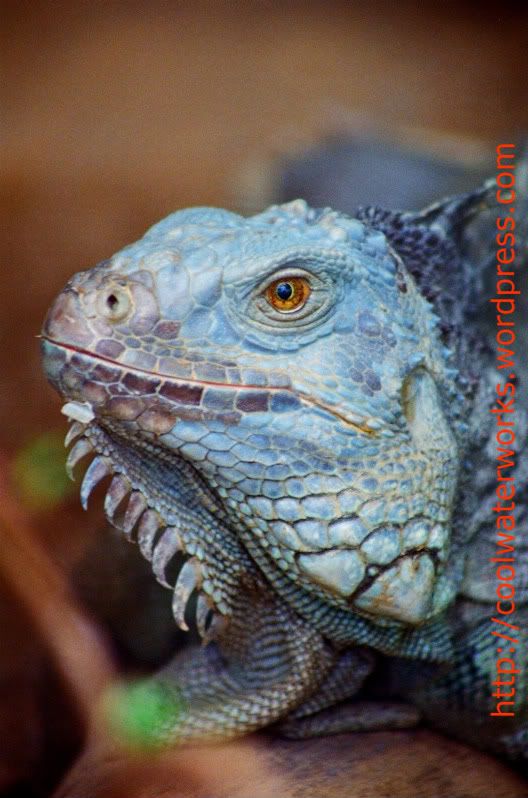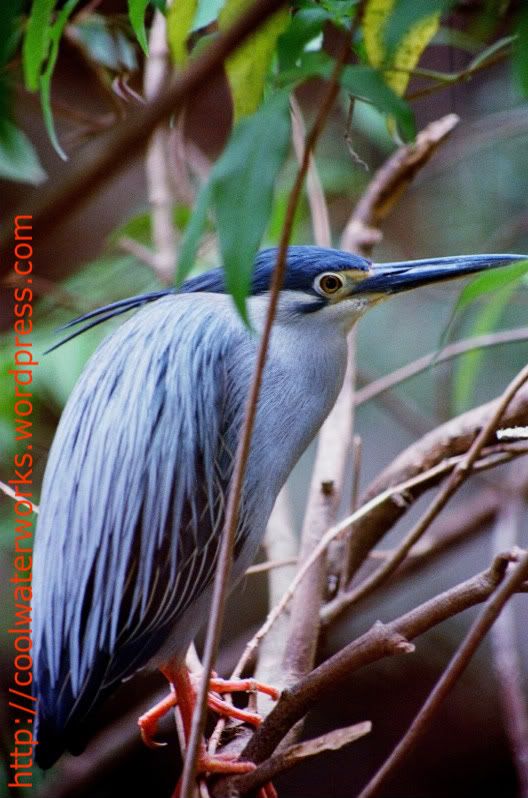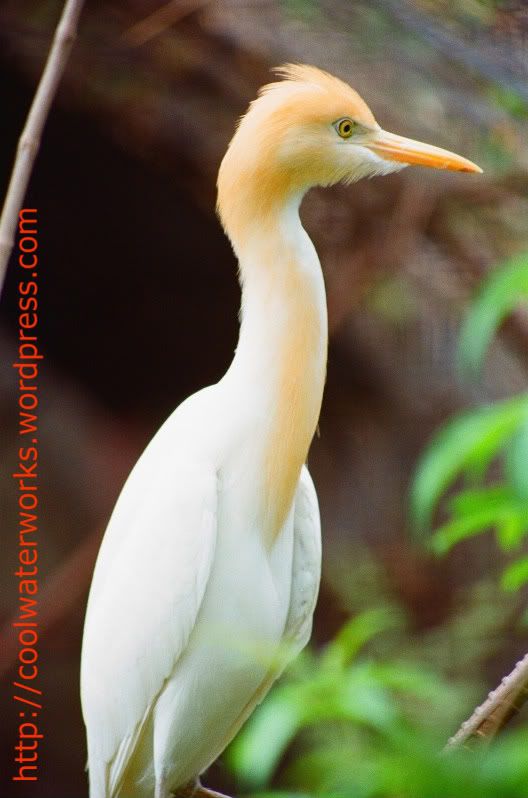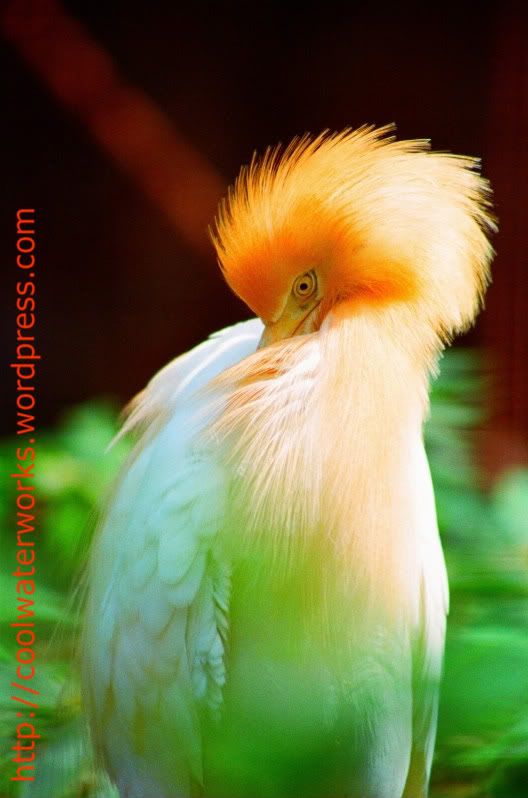I went there last Sunday and had a blast with photography. I am sharing some pics that I took. The animals here are but a small fraction of the animals they host at Crocolandia. I took their pictures because I don't have any of them in my stock. Not featured are the prominent deers, wild boars, snakes and other arboreal animals such as civet and the Palawan Bear.
Since the place is for crocodiles, let's do the crocs first. Here's the very first crocodile that I saw (imaged cropped to isolate croc).

----------
This crocodile has just surfaced from the water.

----------
The main attraction of Crocolandia is Lapu-lapu, the largest crocodile in the Visayas, spanning more than 6 feet. Here, he is submerged in his own pond. I was not to able to see him in his feeding time - 4PM on Sundays. I went there at around 1PM.

----------
Ready for the bite! This is an old crocodile in the park...

---------
That's it for the crocs... Next, we'll have the other sauropsids.
This is the Philippine sailfin lizard (Hydrosaurus pustulatus). This lizard is an excellent swimmer and has flattened toes that enable it to run across water. It is omnivorous, feeding mostly on insects and small animals and occasionally on fruits and leaves. It lives near rivers and tropical rainforests. Locally it is known as "ibid".

----------
A close-up shot of the sailfin lizard.

----------
There only two species for the Iguana genus: Green Iguana and Lesser Antillean Iguana. Crocolandia has two green iguanas. It was difficult to take a full body shot of the iguana, so I opted for a portrait shot. Though this is a green iguana, it turned out to have a bluish tinge (they seldom respond to a blue stimulus).

----------
The African Spurred Tortoise (Geochelone sulcata) is probably the most shameless chelonian I have ever meet. It the third largest of all tortoises and the largest among mainland tortoises. It was difficult to take a decent picture of this tortoise.

----------
There are also many snakes in the park but it was difficult to take decent shots in their cages.
Let's go to the avians.
When I saw this Indian peafowl (Pavo cristatus), I was very excited to take a picture. And it proved to be challenged since this bird seemed be affected by attention deficit hyperactivity disorder. I used an entire roll, and this is the most decent cropped shot I was able to take.

----------
This is the Rufous Night Heron (Nycticorax caledonicus). This is a medium sized heron commonly found in rice farms, rivers and streams. Contrary to its name, this heron is not strictly nocturnal.

---------
It took me awhile to determine this heron's name, since no details about this bird is posted on its cage. After scouring for different kinds of herons, I have come to conclude that this is a Striated Heron (Butorides striata).

---------
This heron is common in mangrove swamps and is also called as mangrove heron. I like the blue feathers on its back that form like a cape.

---------
My most favorite among the birds in Crocolandia is the Cattle Egret (Bubulcus ibis). Locally known as "talabong" (tulabong in Hiligaynon), its all-white plumage changes during breeding season. The cattle egret here is in its breeding plumage.

----------
When I was about to go home, I decided to go back to the egret's cage. Some streaks of light has penetrated the cage, and a ray hit the egret putting it in sidelight. As an effect, its breeding plumage of orange tint become more saturated on sight.

----------
And this shot made my day. Sidelighting is really wonderful...

----------
Crocolandia also has an ostrich. It was also difficult to take a shot of it since it approaches anyone who comes near its cage.
If you are in Cebu and you want to visit Crocolandia, the entrance fee for adults is PhP80.00 and PhP40.00 for children. They give a discount for groups of 25 persons. A guided tour by the volunteer biologists of the park can also be arranged. You can call 2731842.
How to go there: take the 42D PUJ from Citilink and ask to be dropped in Eskina Dumlog in Talisay. Take the pedicab or trike from Eskina Dumlog to Crocolandia.
No comments:
Post a Comment